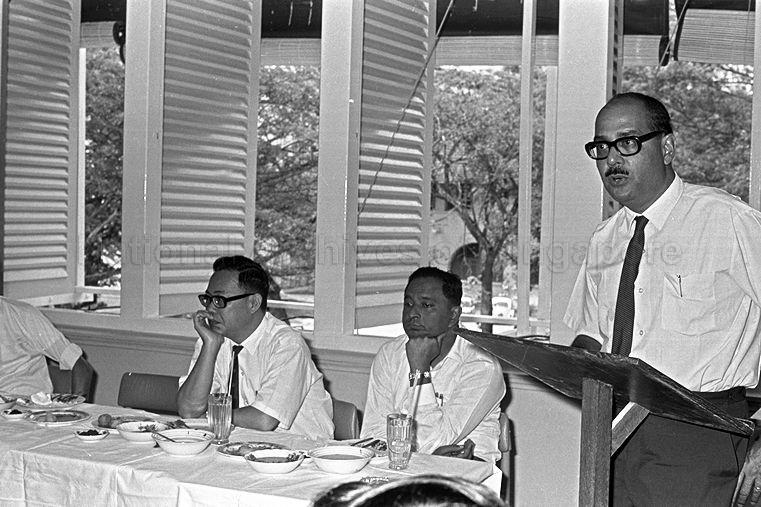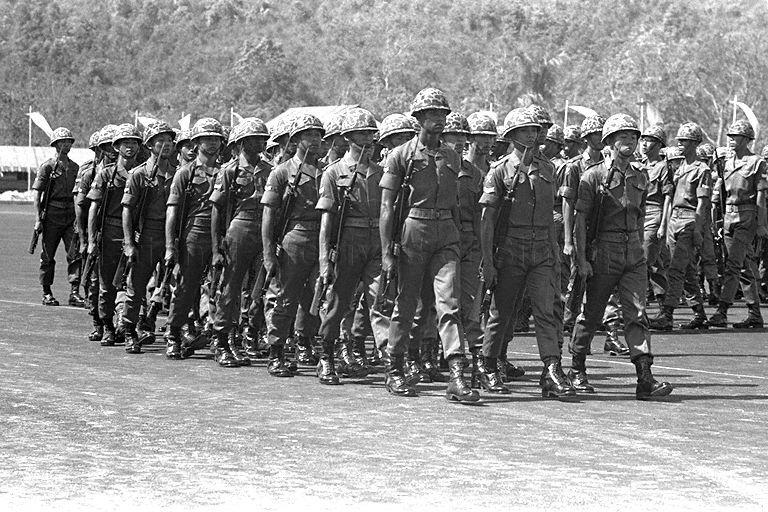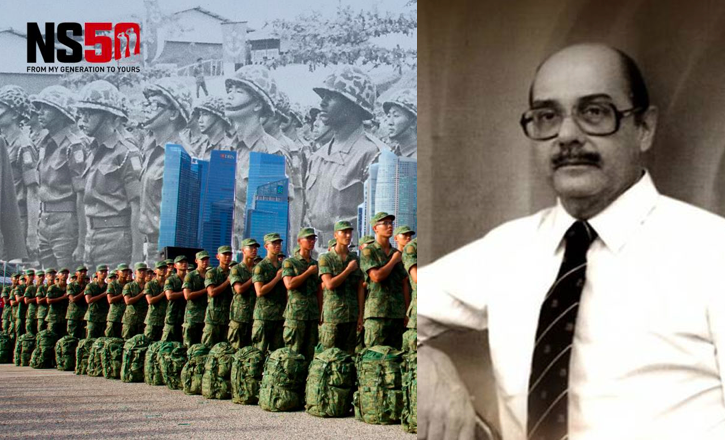National Service (NS) is today ingrained into Singaporeans' DNA and most male Singaporeans would dutifully report for NS when they get the call up - with only some trivial grumbles and complaints for some.
It is perhaps hard to imagine then that National Service was once actually frowned upon by the population.
In 1954, amidst the Communist Emergency when Singapore was still under British rule, NS was introduced to much anger among Singaporeans, particularly the Chinese community, which held the traditional belief that good men should not become soldiers. The opposition to NS culminated in the deadly anti-NS riots by Chinese Middle School students in 1954 and 1955.
[caption id="" align="aligncenter" width="665"] Picture via[/caption]
Picture via[/caption]
This resistance to NS among Singaporeans persisted into the early years of Singapore's independence.
Laying the foundations for NS and the SAF
Singapore's first-generation old guard minister Goh Keng Swee is often credited and remembered for introducing Singapore's post-independence NS and also for building up the Singapore Armed Forces (SAF) from scratch.
[caption id="" align="aligncenter" width="768"] Goh Keng Swee inspecting troops. Image via[/caption]
Goh Keng Swee inspecting troops. Image via[/caption]
But Goh did not accomplish this alone, and had help from a multitude of civil servants. Chief among them was one named George Bogaars - a less well-known but highly important character in the story of Singapore's security and defence.
Before Bogaars started work on building up the SAF, he was the first Singaporean to head Special Branch — the forerunner of the Internal Security Department.
[caption id="" align="aligncenter" width="761"] George Bogaars at far right. Source: National Archives[/caption]
George Bogaars at far right. Source: National Archives[/caption]
When Singapore became independent in 1965, Bogaars became permanent secretary to the Ministry of Interior and Defence, serving under Goh. He was essentially the chief civil servant charged with implementing and operationalising Goh's policy directions.
By then, Bogaars had lived through the Japanese Occupation (1942-1945), racial riots of 1964 and Indonesia’s Konfrontasi against the formation of Malaysia.
A newly independent Singapore, which had previously relied upon the British and Malaysian armed forces for defence, faced an urgent need to build up its own defences.
It was an uphill task, as the anti-NS riots of 1954 and 1955 had shown.
Nevertheless, Bogaars helped to establish the Singapore Armed Forces Training Institute (SAFTI) in 1966. SAFTI laid the foundation for the SAF by training the pioneer batch officers, who would later play a crucial role in training and leading the first batch of National Servicemen.
[caption id="" align="aligncenter" width="768"] Photo from here[/caption]
Photo from here[/caption]
In 1967, the National Service (Amendment) Bill was passed in Parliament. The Bill made NS compulsory for all 18-year-old male Singapore citizens and permanent residents. This led to some 9,000 male youths to become the the first batch NS enlistees.
There was opposition to NS again this time round, but these fewer fortunately fewer and smaller in scale compared to the 1950s. The worst of the protests occurred on March 27, 1967 when street demonstrations were held at New Bridge Road, Rochor Canal Road and Kim Keat Road by about 300 people.
Unfazed by the opposition, Bogaars oversaw the enlistment of Singapore’s pioneer batch of National Servicemen.
He went on a public relations blitz to get Singaporeans to come round to the idea of NS. The strategies he employed seemed simple and practical.
Open houses were held at army camps and send-off parties for those called up for NS were organised at community centres. These proved to be effective in getting Singaporeans to be more receptive and positive towards the idea of NS, as the registration and enlistment of the pioneer batch went smoothly.
[caption id="" align="aligncenter" width="645"] Image via Roost.sg[/caption]
Image via Roost.sg[/caption]
Registration for the pioneer batch of enlistees took place over 16 days, from March 28 to April 18, 1967, and 96 per cent of the roughly 9,000 men eligible for call up dutifully registered at one of four registration centres located at Kallang Camp, and the district offices in Katong, Serangoon and Bukit Panjang.
The registrants would undergo medical examinations in May that year, and further sorted to serve full-time NS or part-time in either in the People’s Defence Force, Vigilante Corps or the Special Constabulary.
[caption id="" align="aligncenter" width="645"] Image via Roots.sg[/caption]
Image via Roots.sg[/caption]
Later that year, on August 17, 1967, Singapore's pioneer batch of 900 full-time NS enlistees began their service in the army's 3rd and 4th Singapore Infantry Regiment (SIR).
[caption id="" align="alignnone" width="2048"] Source: Singapore Army Facebook[/caption]
Source: Singapore Army Facebook[/caption]
NS and the SAF grew from there into the respected institution that it has become today.
Top image via Singapore Army Facebook and Toggle.
Related article:
George Bogaars, a war generation pioneer civil servant who built up S'pore's security & defences
1819 is a labour of love by Mothership.sg where we tell stories from Singapore’s history, heritage & culture. Follow us on Facebook, Instagram and Twitter!
If you like what you read, follow us on Facebook, Instagram, Twitter and Telegram to get the latest updates.
